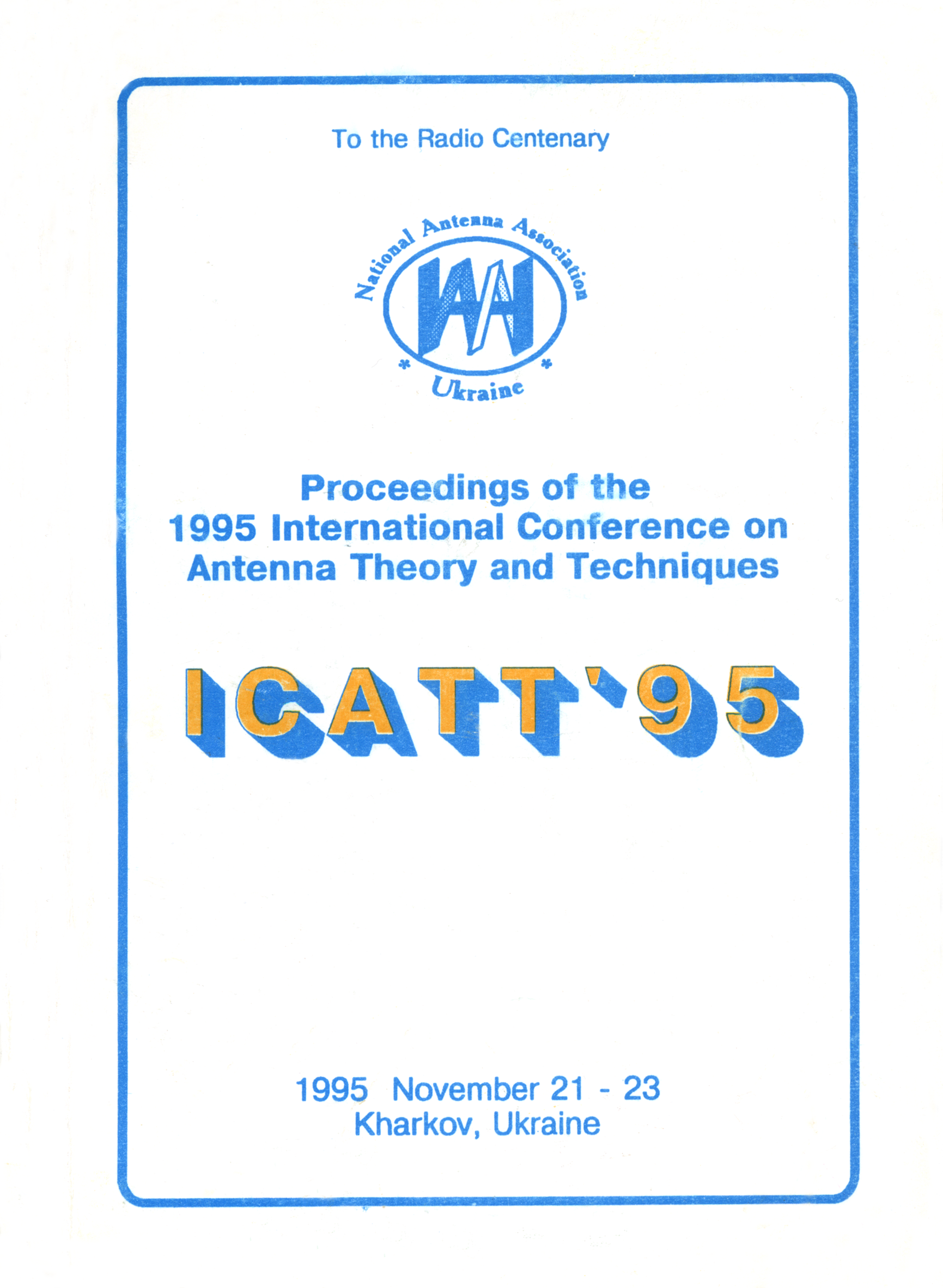Excitation of nonsinusoidal electromagnetic fields by cylindrical monopole antennas
DOI:
https://doi.org/10.1109/ICATT.1995.1234114Abstract
The determination of antenna fields radiation excited by short pulses presents currently a great interest, but the theory of this question is not worked out enough. A finite difference time-domain method (FDTD) is offered to be used for the solution of such problems. The development of computer facilities has allowed to use the offered method effectively in the problems of nonsinusoidal electromagnetic fields determination, the solution of which by the specified method is modified reasonably simply for various types of antennas and shapes of signals.
The FDTD method is applied to a single pulse excited cylindrical monopole, located in free space over the infinite ground plane (with perfectly conducting surface). Fields of a near zone of cylindrical monopole are determined with excitation by pulses of various shapes. The problem of decreasing a quantity of equations is solved by optimization of a grid step over a considered space. Check of convergence and stability of the solutions is carried out, the error is evaluated. Based on the known field in the near zone, the space-time distribution of the current on the vibrator is determined. The principle of a superposition for the reception of a temporal picture of the field at any point of space is used. The spectral analysis of the field is carried out, the frequency components of the signal with excitation of the cylindrical monopole by various pulsing sequences are defined.
The given technique of field determination is valid for a sinusoidal excitation of antenna.
The algorithm calculation of near-zone nonsinusoidal electromagnetic field for cylindrical monopole located above a real ground is proposed.
The results of the theoretical analysis are compared to experimental data. The advantages and defects of the technique are specified. A number of particular urgent problems for the solution of which the above mentioned FDTD method would be appropriate is discussed.

